-
FAA vetoes Valentine flower-delivery drone
Detroit-area florist Flower Delivery Express wanted to use drones to deliver flowers to customers on Valentine Day. The FAA rejected the request, dryly noting that “A commercial flight requires a certified aircraft, a licensed pilot, and operating approval.” The florist is not giving up yet, cryptically saying it is testing “other guarded secret methods” for flower delivery.
-
-
Unmanned aerial logistics system to bypass ground-based threats, challenges
Rugged terrain and threats such as ambushes and Improvised Explosive Devices (IEDs) can make ground-based transportation to and from the front lines a dangerous challenge. Combat outposts require on average 100,000 pounds of material a week, and high elevation and impassable mountain roads often restrict access. Unmanned aerial logistics system would bypass ground-based threats and enable faster, more effective delivery of cargo and other essential services in hard-to-reach areas.
-
-
“Space cops” to help control traffic in space, prevent satellites from colliding

Collisions in space of satellites and space debris have become increasingly problematic. A team of scientists are using mini-satellites that work as “space cops” to help control traffic in space. The scientists used a series of six images over a 60-hour period taken from a ground-based satellite to prove that it is possible to refine the orbit of another satellite in low earth orbit.
-
-
CBP flew its drones on behalf of other agencies
The U.S. Customs and Border Protection(CBP) operates the largest drone fleet in the United States. The Defense Departmenthas a much larger fleet, but it is prohibited from operating its drones in the United States for law enforcement missions. The FAA is working on opening U.S. skies for public and commercial drone traffic, but for now CBP is the only agency permitted to operate drones on a daily basis within the nation’s borders. Released documents show that agencies not allowed to operate drones borrowed them from CBP.
-
-
FAA approves testing, developing standards for commercial use of drones
The Federal Aviation Administration(FAA) yesterday (Monday) has authorized test sites for UAVs. The FAA has selected six institutions to run the tests and operate the test sites. The test sites are part of a program to develop safety and operational rules for drones by the end of 2015, as mandated by Congress. Experts anticipate an exponential growth of drone use in the agriculture and law enforcement sectors. Analysts predict that more than 70,000 jobs would be created in the first three years after Congress approves drone use in U.S. skies, and that the global commercial drone market will reach $89 billion in the next decade.
-
-
Virginia Tech to get $2.6 million to test unmanned aircraft systems
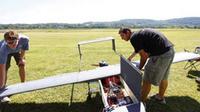
The Commonwealth of Virginia announced it will award more than $2.6 million over three years in Federal Action Contingency Trust (FACT) funds to Virginia Tech to operate an unmanned aircraft systems test site in the state, officials from the governor’s office said. The test range is operated by the Mid-Atlantic Aviation Partnership, which is led by Virginia Tech and Rutgers University and represents an effort safely to develop unmanned aircraft systems. The University of Maryland has also agreed to partner with Virginia Tech and Rutgers on unmanned aircraft system integration.
-
-
U.S. Navy demonstrates UAV launch from submerged submarine
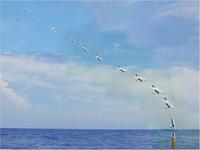
The U.S. Naval Research Laboratory (NRL) demonstrated the launch of an all-electric, fuel cell-powered, unmanned aerial system (UAS) from a submerged submarine. The successful submerged launch of a remotely deployed UAS offers a pathway to providing mission critical intelligence, surveillance, and reconnaissance (ISR) capabilities to the U.S. Navy’s submarine force.
-
-
TCOM’s aerostat systems help U.S. Border Patrol
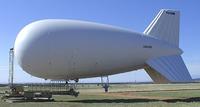
Several TCOM aerostat systems are being evaluated by Border Patrol agents in operational environments along U.S.-Mexico border. TCOM’s aerostat systems enable operators to view activity along the border. The system can typically remain aloft for two weeks to one month at a time. With operational altitudes of up to 5,000ft, the aerostats provide monitoring of thousands of square miles.
-
-
Ohio lawmakers want to limit use of drones by law enforcement
State lawmakers in Ohio want to limit the use of drones by law enforcement agencies in the state.A proposed bill would require law enforcement to obtain a search warrant before using drones. It would prohibit law enforcement from using drones to search for missing persons, locate illegal marijuana operations, or perform several actions officers currently handle with helicopter surveillance.
-
-
Navy blimp returns to Maryland, Virginia, and D.C. skies today
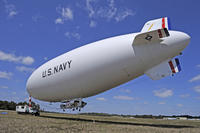
The U.S. Navy’s only manned airship, a modified American Blimp Corporation A-170 series commercial blimp, will return to the skies of Maryland today, 12 November, to conduct week-long testing of experimental avionics systems.Results of this research may ultimately help protect forward deployed U.S. Army and U.S. Marine Corps troops around the globe.
-
-
DoD ends ambitious blimp program
The Department of Defensehas decided to end its Long Endurance Multi-Intelligence Vehicle (LEMV) project.The blimp was supposed to fly for as long as three weeks at a time, gather intelligence using 2,500 pounds worth of the most advanced cameras, sensors, and other intelligence technology. Operating at an altitude of 20,000 feet, the airship was designed to withstand enemy fire with its blend of fabrics, including kevlar. The Pentagon spent $297 million on the airship, but last month sold it back to one of the contractors which built it for $301,000.
-
-
UAV developer CyPhy Works raises $7 million to build flying robots
Danvers, Massachusetts-based CyPhy Works, a developer of advanced UAVs, the other day announced the close of a $7 million financing round led by Lux Capital, with participation from General Catalyst Partners, Felicis Ventures, and several undisclosed angel investors. As part of the financing, Lux Capital Partner Bilal Zuberi will join the CyPhy Works board of directors. The company says it targets 24/7 “persistent” operations.
-
-
U.S. worries about proliferation of drone technology
A new Amnesty International report about U.S. drone use in the war on terror says that the drone campaign is killing so many civilians, that it does not only violate international law, but may be a war crime. The report also says that the growing use of drones by the United States in Pakistan, Yemen, and Somalia encourages their use by other states and groups. The United States rejects the figures of civilian casualties cited in the Amnesty report as unreliable, and says that the research methodology the report’s authors used is deeply flawed. The United States does agree, however, that there is a reason to worry about the proliferation of drone technology. “Going forward this is a technology that we know more people will probably get access to,” a State Department spokeswoman said.
-
-
Greater role for Pentagon in next phase of U.S. war on terror
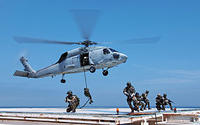
The Obama administration had dramatically increased the use of drones in the war against terrorists. The number of drone strike has declined this year relative to the high levels of 2010-11. The number of drone strikes may increase again, but this past weekend’s Special Forces raids in Somalia and Libya are an indication that the next phase in the U.S. war on terrorism would see, in relative terms, less of a reliance on CIA-operated drones and a greater role for the Pentagon.
-
-
Number of U.S. drone strikes in Pakistan, Yemen significantly reduced
In the past several months, the United States has reduced the number of drone strikes on terrorist targets in Pakistan and Yemen. The United States launched 117 drone strikes in Pakistan in 2010, compared to twenty-one so far this year. Representative Mike Rogers (R-Michigan), chairman of the House Permanent Select Committee on Intelligence, is concerned. “[The threat of terrorism is] not diminishing,” he said. “There have been counterterrorism changes made by the administration that have concerned us all, things that we’ve been working on for a period of months that we’re trying to work through that are very, very concerning. This is no time to retreat.”
-
- All
- Regional
- Water
- Biometrics
- Borders/Immig
- Business
- Cybersecurity
- Detection
- Disasters
- Government
- Infrastructure
- International
- Public health
- Public Safety
- Communication interoperabillity
- Emergency services
- Emergency medical services
- Fire
- First response
- IEDs
- Law Enforcement
- Law Enforcement Technology
- Military technology
- Nonlethal weapons
- Nuclear weapons
- Personal protection equipment
- Police
- Notification /alert systems
- Situational awareness
- Weapons systems
- Sci-Tech
- Sector Reports
- Surveillance
- Transportation
Advertising & Marketing: advertise@newswirepubs.com
Editorial: editor@newswirepubs.com
General: info@newswirepubs.com
2010-2011 © News Wire Publications, LLC News Wire Publications, LLC
220 Old Country Road | Suite 200 | Mineola | New York | 11501
Permissions and Policies
Editorial: editor@newswirepubs.com
General: info@newswirepubs.com
2010-2011 © News Wire Publications, LLC News Wire Publications, LLC
220 Old Country Road | Suite 200 | Mineola | New York | 11501
Permissions and Policies
